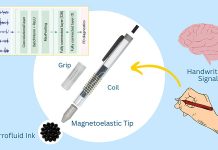
Early diagnosis of Alzheimer’s disease has been shown to reduce cost and improve patient outcomes, but current diagnostic approaches can be invasive and costly.
In a new study from the University of Tennessee, researchers found a novel way to identify a high potential for developing Alzheimer’s disease before symptoms occur.
They found that cognitively healthy people at increased genetic risk of late-onset Alzheimer’s disease showed a strongly lower sensitivity to thermal pain but felt greater unpleasantness related to that pain when compared to people at lower risk of the disease.
These results suggest that altered pain perception may be used as a biomarker of late-onset Alzheimer’s disease before symptoms occur.
Previous research had identified a specific genetic allele, APOE4, as a marker associated with an increased incidence of developing late-onset Alzheimer’s disease.
In the study, the team was able to identify individuals who were cognitively healthy but had the APOE4 allele.
They were then able to determine whether people with the APOE4 allele responded differently to painful stimuli than did cognitively healthy people who did not have this allele.
The study included 49 cognitively healthy adults aged 30-89. Twelve of the people had the APOE4 allele, and 37 did not.
They were assessed for differences in pain thresholds and feelings of unpleasantness in response to thermal pain stimuli.
The team found that healthy adults with a specific gene for developing late-stage Alzheimer’s disease experience pain differently than people without the genetic marker.
The team says the use of this biomarker to identify people at risk of Alzheimer’s disease before the onset of serious symptoms would be much less invasive than other methods of Alzheimer’s diagnosis, which include lumbar punctures and positron emission topography (PET) scans.
These are expensive tests that are not practical in primary care settings.
The team now needs to examine the brain’s pain systems to determine why this may be occurring.
If you care about Alzheimer’s disease, please read studies about how your eyes could show early signs of Alzheimer’s disease and findings of how to slow down Alzheimer’s disease at the earliest stage.
For more information about dementia treatment and prevention, please see recent studies about this blood pressure number may help predict dementia and results showing that this common brain disease could lead to dementia.
The study is published in the Journal of Alzheimer’s Disease. One author of the study is Ray Romano, Ph.D., RN.
Copyright © 2021 Knowridge Science Report. All rights reserved.



